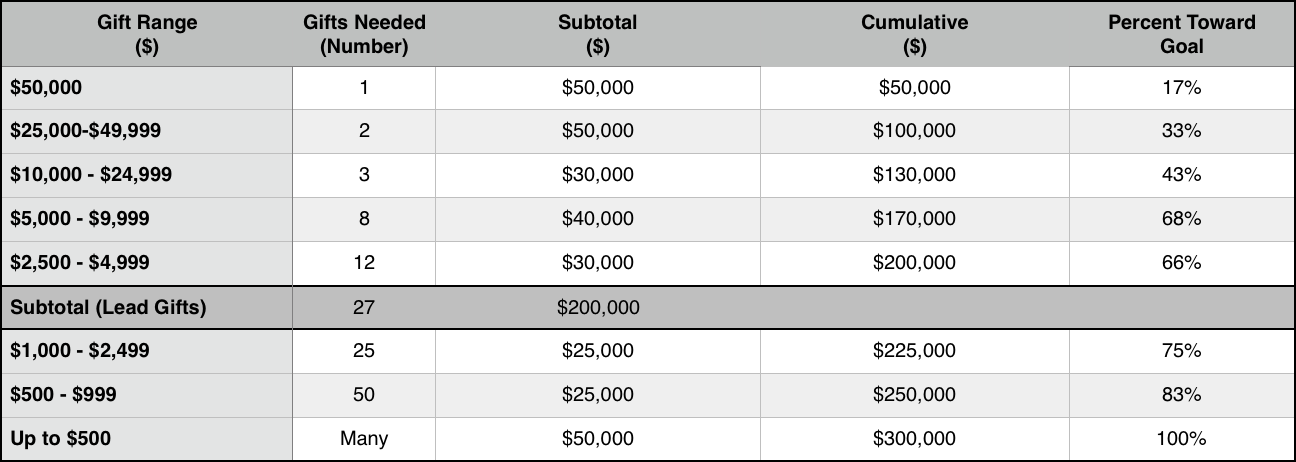No Time to Raise Major Gifts? 7 Steps to Find the Time

I recently spoke with Nancy, the development director of a small social service organization. Over a few minutes, she outlined for me the things she was called on to do in her job.
Nancy has a problem that you probably have too.
In fact, most development directors and executive directors have this problem. And no one seems to know how to fix it. But in this post, I’ll give you a seven-step solution.
So what’s Nancy’s Problem?
There’s Not Enough Time to Raise Major Gifts
There. I said it.
Most development staffers don’t have time to raise major gifts. And that’s probably true for you too.
How are you spending your precious time?
You probably have little or no time to raise money because every day, from early to late, you’re spending your time on things like this…
- You’re spending scads of hours getting your mail appeals ready to go.
- You’re sitting in endless meetings.
- You’re inputting data and pulling reports for the development committee who don’t do much beyond coming to the meetings.
- You’re working on board reports.
- You’re jumping to the tune of demanding volunteers.
- You’re researching foundations (because somewhere there must be some that give to your kind of organization).
- You’re meeting with the volunteer committee that’s planning next year’s gala even though it doesn’t really net very much.
- You’re getting word out in the press about this or that.
- And you’re trying like mad to prepare your organization’s newsletter.
And that’s just a start of the list of things you probably do in a day. Honestly, just writing that list makes me tired and exasperated!
What’s missing from this list?
Meeting with potential donors, of course! Getting commitments for large gifts that will make a big difference in your organization.
Imagine Having the Time to Raise Major Gifts…
- Imagine if you spent more of your time talking with your donors about the ways their gifts could change lives.
- Imagine if you spent more time sharing your passion about helping kids or saving lives or changing the world.
- Imagine if this year, by doing those things, you raised more money than ever before and had much more fun doing it.
Really! Stop reading for a few moments and imagine what that would feel like…
It would feel pretty good. Right?
Now, let’s stop imagining and make it a reality.
7 Steps to Make Time to Raise Major Gifts
Here is a seven-step solution for you to find the time necessary to raise major gifts for your organization.
Step 1: Imagine a Stretch Goal
Take a look at what you raised last year. Double it. Or triple it if you’re willing.
Ask your ED and Board Chair to think through with you what an increase like that would make possible. (Note that the right answer is not more money in the bank!) Get them excited about the possibilities.
Step 2: Get Rid of Unproductive Work
Take a few days — even a week — to write down all the things you do each day. Make a list of all the things you work on. One long list.
Then sit down with your team and your boss and figure out how to get rid of at least a quarter of them. The key here is to review the list with your “Major Gift Glasses” on. If something doesn’t help to raise major gifts, get rid of it.
You’ll be surprised to see how many things you can cross of your list immediately without much trouble. Others may take longer. But keep your eye firmly on freeing up your time.
Get good at saying “NO” to things that won’t help you raise more money and delegating them to other people.
Step 3: Create a Gift Chart
Take your stretch goal and create a little gift chart showing how many gifts of what sizes you’ll need to reach your goal. It needn’t be more complicated than the sample below.
Sample Gift Range Chart

Adapt the numbers for your stretch goal. You can develop the same sort of chart whether your stretch goal is $10,000 or $1,000,000.
Step 4: Build a Depth Chart
Then create a depth chart using the numbers on your gift chart. It’s simply a way of identifying and prioritizing prospective donors according to their giving potential. Start to fill it in from the list of people who are already donors to your organization but could give more.
Then, if you wish, add a few more people who you’ve had your eye on but are not yet involved.
Sample Depth Chart

These charts are basic capital campaign tools. But they will work for your year-in, year-out fundraising, too. Why? Because they focus your attention on what’s most important for fundraising like a laser.
Step 5: Develop a Simple Strategy for Each Donor
Now, start one by one to make a plan to engage each of the donors on that list. If you feel uneasy about that, listen to the podcast episode featuring Sarah Plimpton, our Director of Client Happiness.
You’ll discover that working with major donors is not difficult or complicated. Rather, it’s human and exciting and can be inspirational.
Step 6: Start Every Week with A Donor Action Plan
Don’t let a Monday go by without sitting for 30 minutes and making a list of the direct donor actions you will take that week. They might include scheduling meetings, calling a donor to tell her something, inviting someone for a tour, asking people if they’ll help you open a door.
Step 7: Execute Your Plans
Now, you’ve got to get going. Every week, every day, you must put in your major gift work first. Chances are good, you’ll have to drive this process because no one else will.
So, you’ve got to create the time and the space and the will to reach out to major donors and to share with them the difference their investment in your organization would make.
My promise to you — If you focus attention on major gifts every day, no matter what, and if you are truly excited about the good your organization does in the world, you WILL raise more money. And chances are good that you’ll be more excited to come to work every day. Because you’ll know that your work is making a real difference in the world.
Caution: You May be Getting in Your Own Way
YOU may well be the biggest thing standing between what you are doing now and more effective fundraising.
In some ways, as deadening as your work might be, it takes courage to be willing to commit to change. To take the reins and lead the way forward — particularly if you’re not the boss.
But over my many years as a consultant and a coach, I’ve learned that when people become crystal clear about what they want to do and get determined to make it happen, they almost always succeed. And when they do, they are transformed because they come to understand and embrace their own power and potential.
What are you going to do differently going forward to reclaim the clock? Share your comment below.
Free Campaign Checklist & Guide
Download our free capital campaign checklist and guide to learn exactly what’s required for each campaign phase.



Leave a Comment